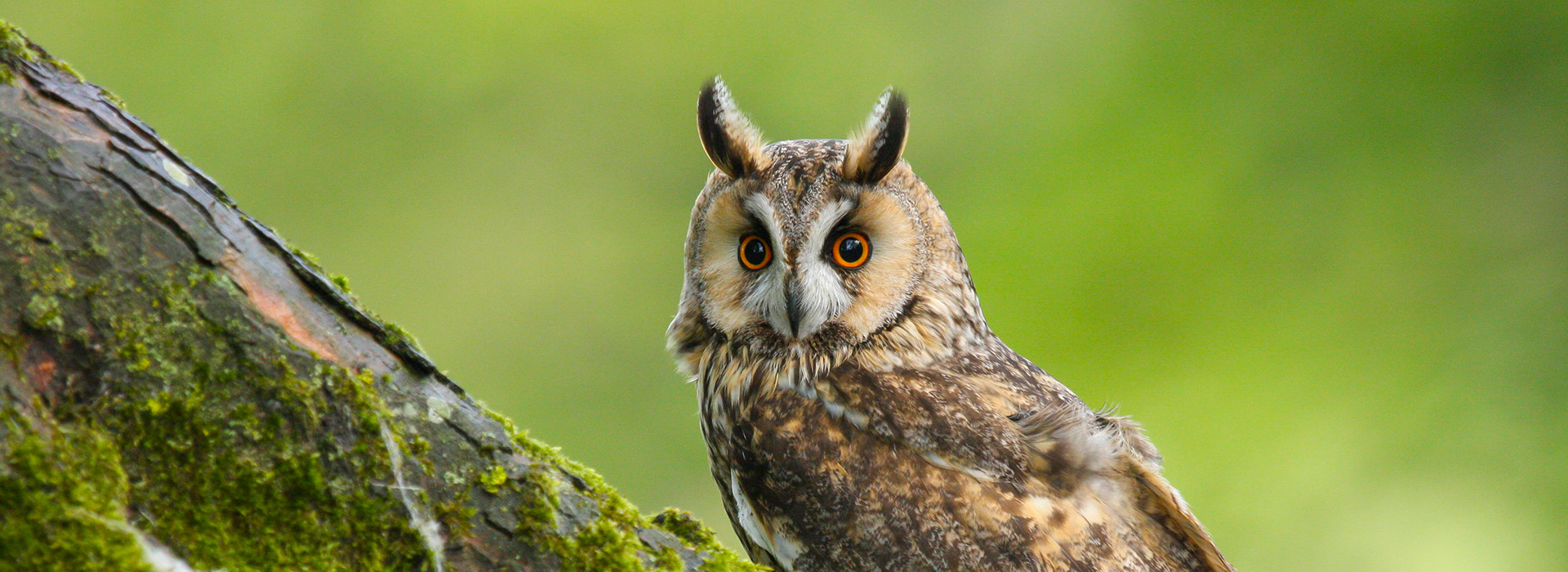Hawk and Owl Trust asks the public to contribute to a nationwide survey of Long-Eared Owls
With a heightened decline of the Long-Eared Owl population in the UK, the Hawk and Owl Trust is calling on members of the public to contribute sightings and winter roosting sites to a nationwide survey of the species.
The two leading owl and bird of prey conservation charities Hawk and Owl Trust and the International Centre for Birds of Prey collaborating with the Scottish Owl Centre are working to monitor the movements and nesting behaviour of Long-Eared Owls, to help direct future conservation efforts while increasing awareness about these rare birds.
"Everyone can contribute to this survey, regardless of where they live; we are trying to build a complete picture of the Long-Eared Owl population across the UK, meaning negative sightings are just as valuable as positive ones,” said Chris Sperring MBE, Conservation Officer at the Hawk and Owl Trust. “There is a desperate lack of data on this rare and often elusive species, making it difficult for us to properly comprehend the cause of their declining population.
By letting us know about the number of owls present in their local area, members of the public can help us broaden our understanding of how climate change and other factors are impacting populations, allowing us to maximise the impact of future conservation efforts.”
The UK’s Long-Eared Owl population has rapidly declined since the mid-1990s, with increasingly rare sightings in the past decade. Long-eared owls are distinctive due to their eponymous long feathered ear tuft, orangey-rufous facial patches, and striking orange eyes. Global warming and climate change are considered likely to be major contributors to their decline in the UK as it is believed that as continental Europe experiences warmer and milder winters, owls no longer need to migrate. The research also aims to establish whether the decline in population could be due to a reduction in appropriate habitats, declining numbers of voles (a key food source), or if predators like Tawny Owls are impacting the species.
“It’s really easy to participate in the survey, you certainly don’t have to be a wildlife expert to let us know what you find when you’re out and about this winter,” continues Chris. “Our website features a short video explaining how to take part when you’re out having a stroll over the next few months. By sharing your findings through a simple online form, you will be contributing crucial data about the winter roosting habits of Long-Eared Owls, contributing to our ongoing protection and conservation efforts for these magnificent birds. Together, we can ensure a brighter future for both Long-Eared Owls and their habitats.”
To learn how to participate in the project, visit longearedowl.org for instructions on how to survey and submit your findings. Long-eared owls can be found in both rural and urban areas, particularly in built-up greenspaces with mature hedgerows, including parks in towns and cities. Even if owls are not spotted, it is still helpful for people to record their results, ensuring that the survey is representative of the whole country. This is an ongoing project and people are encouraged to submit multiple responses over the coming months.
Data from the survey will support the Hawk and Owl Trust’s efforts to re-establish breeding pairs of Long-Eared Owls and increase the overall population of the species in the UK, by informing work with landowners to improve and enrich habitats.
To find out more information about how to contribute to the survey or to learn more about the Long-Eared Owl species, visit longearedowl.org

